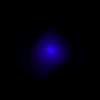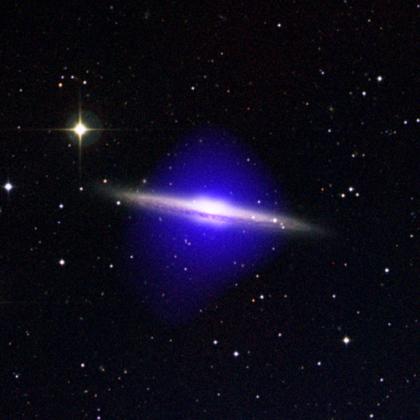Detection of Hot Halo Gets Theory Out of Hot Water
Chandra observations of the massive spiral galaxy NGC 5746 revealed a large halo of hot gas (blue) surrounding the optical disk of the galaxy (white). The halo extends more than 60,000 light years on either side of the disk of the galaxy, which is viewed edge-on.
The galaxy shows no signs of unusual star formation, or energetic activity from its nuclear region, making it unlikely that the hot halo is produced by gas flowing out of the galaxy. Computer simulations and Chandra data show that the likely origin of the hot halo is the gradual inflow of intergalactic matter left over from the formation of the galaxy.
Spiral galaxies are thought to form from enormous clouds of intergalactic gas that collapse to form spinning disks of stars and gas. One prediction of this theory is that massive spiral galaxies should be immersed in halos of hot gas left over from the galaxy formation process.
Hot gas has been detected around spiral galaxies in which vigorous star formation is ejecting matter from the galaxy, but until now, hot halos due to infall of intergalactic matter had not been detected. Indeed, the extensive hot gas halo around NGC 5746 is faint and would be very difficult to detect without a powerful X-ray telescope such as Chandra. Also, the galaxy's special orientation and large mass increased the chance of detection.
The discovery of a hot halo around NGC 5746 was welcome news to astronomers because it shows that the "missing" hot halos predicted by computer models in fact exist.
|
||||||||||||||||||||||||||||||





